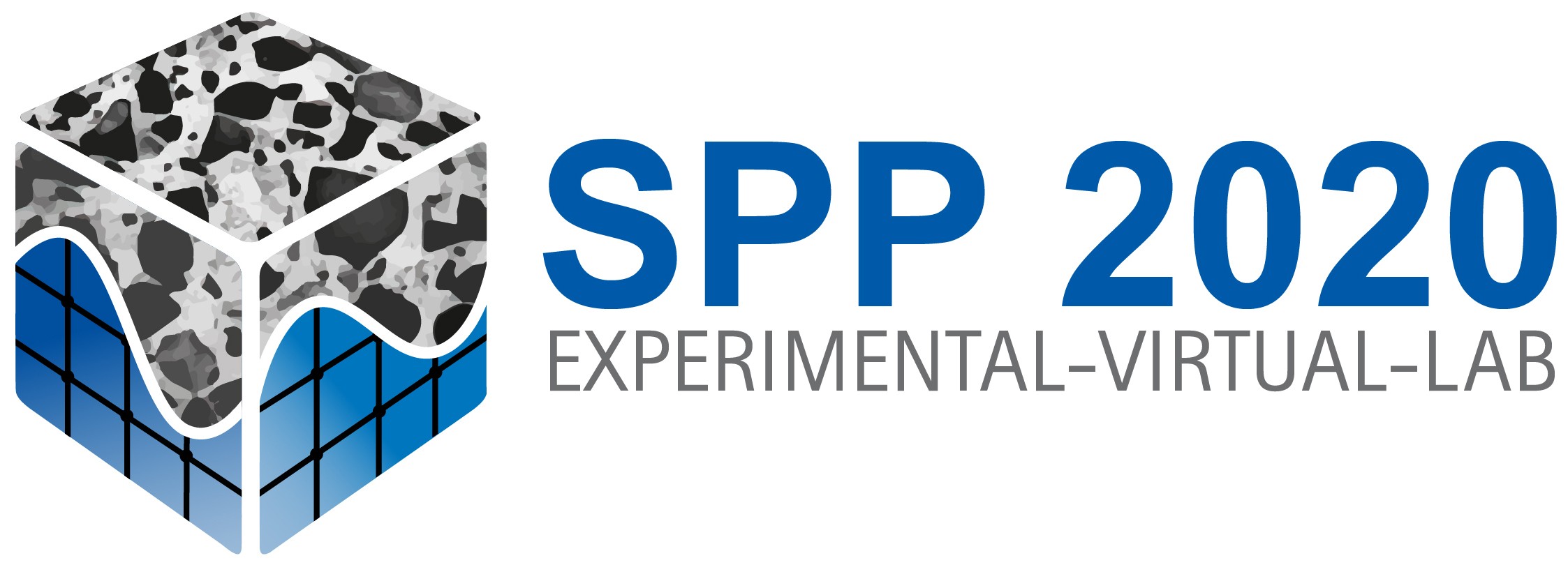In order to be able to replace complex fatigue tests with corresponding numerical simulations in the future, the mechanisms leading to degradation are investigated on a high-performance concrete. The high performance concrete used achieves very high tensile and flexural strength by mixing in oriented short carbon fibres and can serve as a starting point for the future modelling of the fatigue behaviour of other high performance concretes with a more complex composition.
In the first funding phase, multiple measuring methods acting on different scale levels were combined for this purpose. At the macro level, in cyclical, uniaxial tensile tests, sound emission analysis and coda wave interferometry were used in addition to conventional measurement methods such as digital image correlation to represent the internal damage. In addition, the conductivity of the carbon fibres made it possible to determine the damage in the test specimen by measuring the electrical resistance. On the micro and meso level, the microstructure of unloaded test specimens on the one hand and the development of microcracks on the other hand were recorded in flexural tensile tests with the aid of computer tomography and microscopic examinations.
On the basis of the data thus obtained, microstructure-oriented unit cells (RVE's) were developed in which the carbon fibres were connected to the surrounding matrix via slip-displacement conditions. First crack development simulations are planned until the end of the first funding phaseIn the second funding phase, the necessary investigations are to be continued by the proven closely networked project group, which combines the strengths of two experimental research institutions on different scale levels, supplements them with highly specialized non-destructive measurement methods and leads to numerical multi-scale modelling. A special focus is placed on the description of fatigue behaviour and degradation prognosis. In particular, the question of microscopic failure (fibre extraction or fibre crack) of the carbon fibres themselves has to be answered. Therefore, the applied measuring methods on micro- as well as on macro-level will be supplemented or further developed to the extent that the transition from fatigue phase II to phase III can be fundamentally investigated.
In addition to the systems used in the first period, transmission electron microscopy (TEM) is used. The digital image correlation as well as the resistance measurement will be further developed in order to better understand the damages inside and outsideIn addition, the aspect of damage accumulation will be intensively examined. On all considered scale levels sequence effects are investigated and evaluated in order to work out their influence on material degradation. The knowledge gained in this way flows directly into the validation of the mathematical simulation in the models.
